I’m a Detroit native, having grown up in Hazel Park, right outside of the city. In fact, the only tattoo I have is of the Detroit skyline. What’s happened to my hometown over the last 65 years is tragic and has affected the lives of hundreds of thousands of people for the worse. Yet it’s also a place where hope is in the air.
Between 1950 and 2010 Detroit lost 61 percent of its population (from 1,849,568 to 713,862) while Philadelphia lost 26 percent of its population (2,071,605 to 1,526,006). Like all big American cities, both Philadelphia and Detroit faced fiscal pressures after the Great Recession, but Detroit filed for bankruptcy—the largest municipality ever in United States history to do so.
Part of Detroit’s problem has always been lackluster leadership, according to Professor Richardson Dilworth of Drexel’s Center for Public Policy. “During the time of Philadelphia’s famed post-World War II reform renaissance, Detroit was plagued by the mayoralties of Albert Cobo and Louis Miriani, which the Detroit Free Press has ranked as the fourth and fifth worst mayors in the city’s history, respectively,” says Dilworth. “Cobo is generally credited with exacerbating race relations in a city that (like Philadelphia and all other big Northern cities) was experiencing massive African American in-migration, making race a particularly difficult subject. While Philadelphia mayors Dilworth and Clark were both very vocal supporters of civil rights and integration, Cobo was known for capitulating to white racism, especially in his housing policies. He is also generally held responsible for building freeways that required demolishing the most historic black neighborhoods in the city.”
Adding to the tension of race relations was Detroit’s dependence on the automobile industry. We’ve talked a lot this season about the need for cities to have vibrant, diversified economies. Even at its zenith, the Detroit economy bucked that trend. “Detroit was more subject to the fortunes of the big 3 automakers, especially as those companies faced more competition from foreign auto manufacturers, and themselves moved much of their work to foreign factories,” explains Dilworth. “Philadelphia, which was always more a center of smaller-scale manufacturing, as well as of medical schools and other forms of higher ed, had a more diversified economy that was thus more resilient.”
Much of the devastating population loss Detroit experience after World War II can be explained by this recipe: Greater race conflict exacerbated by weak mayoral leadership, combined with dependence on a single industry. That, in turn, accounts for the city’s dismal education levels, and poverty and crime rates.
Yet, talk about resilience…all is not lost. The really interesting thing here is Detroit’s quite high volunteer rate and voter turnout. “The crisis of Detroit has brought out some of the civic best in many of the people who are still there, and who are moving there,” says Dilworth. “So you have a huge sort of ‘DIY’ movement in Detroit around things like housing and urban agriculture, which is reflected in the volunteer rate.”
Yes, Detroit’s fate is still precarious, but its citizens are stepping up and no longer waiting for someone to bail them out. That’s my hometown.
We play at New England Dec. 6.
Results

PhiladelphiaEagles |
|
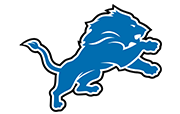
DetroitLions |
|
% BA or higher
24.4 |
7 POINTS
Eagles |
% BA or higher
13.0 |
|
% Below poverty
27.2 |
7 POINTS
Eagles |
% Below poverty
41.2 |
|
% Bike to work
2.1 |
7 POINTS
Eagles |
% Bike to work
0.4 |
|
% Moved to city in past year
4.6 |
7 POINTS
Eagles |
% Moved to city in past year
3.1 |
|
Violent crime per 1,000 residents
11.0 |
7 POINTS
Eagles |
Violent crime per 1,000 residents
20.7 |
|
% Volunteer
26.1 |
7 POINTS
Lions |
% Volunteer
27.0 |
|
% Voted in last mayoral election
25.5 |
7 POINTS
Eagles |
% Voted in last mayoral election
25.38 |
|
Income Inequality Index
.51 |
7 POINTS
Tie |
Income Inequality Index
.51 |
|
% of population aged 22 to 34
22.5 |
7 POINTS
Eagles |
% of population aged 22 to 34
17.07 |
|
Final Score
42 |
Philadelphia
Eagles |
Final Score
7 |
Sep. 14 |
21-35
Falcons |
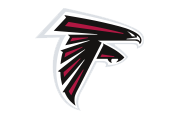
Falcons |
Sep. 20 |
21-42
Cowboys |

Cowboys |
Sep. 27 |
28-35
Jets |
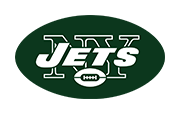
Jets |
Oct. 04 |
14-42
Redskins |
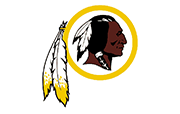
Redskins |
Oct. 11 |
21-42
Saints |

Saints |
Oct. 19 |
28-35
Giants |
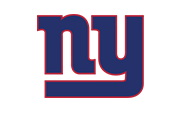
Giants |
Oct. 25 |
21-35
Panthers |

Panthers |
Nov. 08 |
21-42
Cowboys |

Cowboys |
Nov. 15 |
56-0
Eagles |
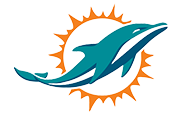
Dolphins |
Nov. 22 |
35-28
Eagles |
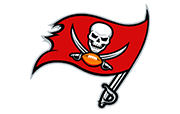
Buccaneers |
Nov. 26 |
42-7
Eagles |

Lions |
Dec. 06 |
28-35
Patriots |

Patriots |
Dec. 13 |
42-21
Eagles |

Bills |
Oct. 19 |
35-28
Eagles |

Cardinals |
Dec. 26 |
14-42
Redskins |

Redskins |
Jan. 03 |
35-28
Eagles |

Giants |
Civic Record:
EAGLES |
Wins
5 |
Losses
7 |
Upcoming Games:
Data compiled by Ken Gross, Quantitative Innovations.
All data from the U.S. Census American Community Survey 2011-2013 except: Volunteer rates; crime stats.
Voter turnout rates from Philadelphia’s 2015 general election; Detroit’s 2013 general election.
More info on the GINI Index of Income Inequality.
* All team logos are property of the NFL and their respective franchises.
Homepage photo: Brian Garfinkel/Philadelphia Eagles



